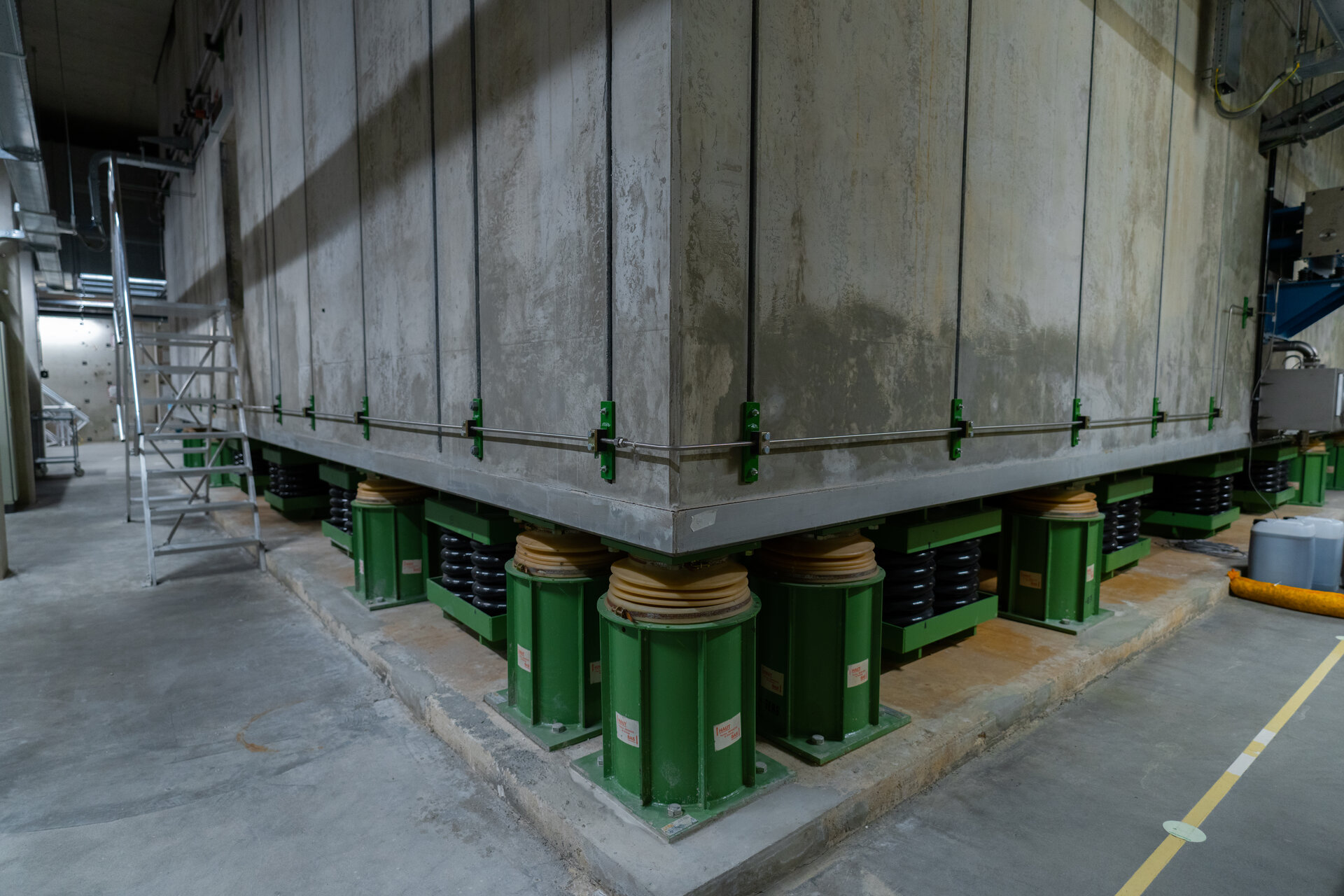Edge of earthquake zone
As the earthquake-strength Hydra shaker table simulates the vibration forces of a rocket launch for satellite testing, it is only this concrete block and the dampers and springs supporting it that prevent the rest of ESA’s ESTEC Test Centre from also suffering the shakes.
The most powerful and precisely controllable of the shaker tables ESA uses for satellite testing at its Test Centre in Noordwijk, the Netherlands, the multi-axis Hydra is capable of vibrating test items weighing many tonnes.
Seen from the cleanroom above, the hydraulically-powered Hydra appears to be simply 5.5 x 5.5 m aluminium platform lying flush with the floor. But this plate is only the top of an 18-tonne test table which is moveable using eight hydraulic actuators, in the same manner as a flight simulator machine.
This test table is enclosed within a 1400-tonne concrete ‘seismic foundation’ block, one corner of which is seen here. This block rests in turn on the set of springs and dampers seen at the bottom, which isolate it, preventing potentially damaging vibrations from spreading through the rest of the building.
Operated for ESA by European Test Services, the ESTEC Test Centre is the largest facility of its kind in Europe, providing a complete suite of equipment for all aspects of satellite testing under a single roof. You can visit ESTEC during this year’s ESA Open Day in the Netherlands, taking place on the first weekend of October.
For all the latest Technology News Click Here

